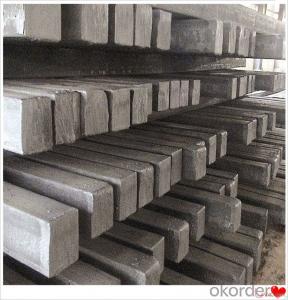Continuous Casting Steel Billet 3SP 5SP 20MnSi Multifunctional
- Loading Port:
- Dalian
- Payment Terms:
- TT OR LC
- Min Order Qty:
- 100 m.t.
- Supply Capability:
- 50000 m.t./month
OKorder Service Pledge
OKorder Financial Service
You Might Also Like
Continuous Casting Steel Billet 3SP 5SP 20MnSi Multifunctional
Description
Reference Price:$260/ton Mn 0.3%-0.6%
Rectangular billet continuous casting billet and mainly general carbon steel, low carbon low silicon cold-rolled material, high quality carbon structural steel, high strength low alloy steel, special steel, etc.
The billet is mainly divided into two kinds from the shape:
Slab: cross section width and height of the ratio of the larger, mainly used for rolling plate.
Billet: equal cross section width and height, or a huge difference, mainly used for rolling steel, wire rod. ,
Steel billets have distinct characteristics as compared with already furnished steel bars and products. Billets have a specific grain structure, which enables the metal to be processed more intricately. Steel billets are also known for their malleability and ductility, especially when exposed to varying temperatures during shaping and molding.
Processing of Steel Billet
Steel billets are considered fresh and raw, and they must undergo a series of manufacturing processes before they can be used for various purposes. Billets are made by means of freezing molten liquid, and are later exposed to extremely low temperatures in order to allow the metal to take shape and solidify in chemical structure. The temperature manipulates the metal's physical properties, and tones its strength and durability. The subsequent processes provide the metal's curved mold design so that it can fit the allotted space provided by other machines, which complete the finishing procedures.
Images
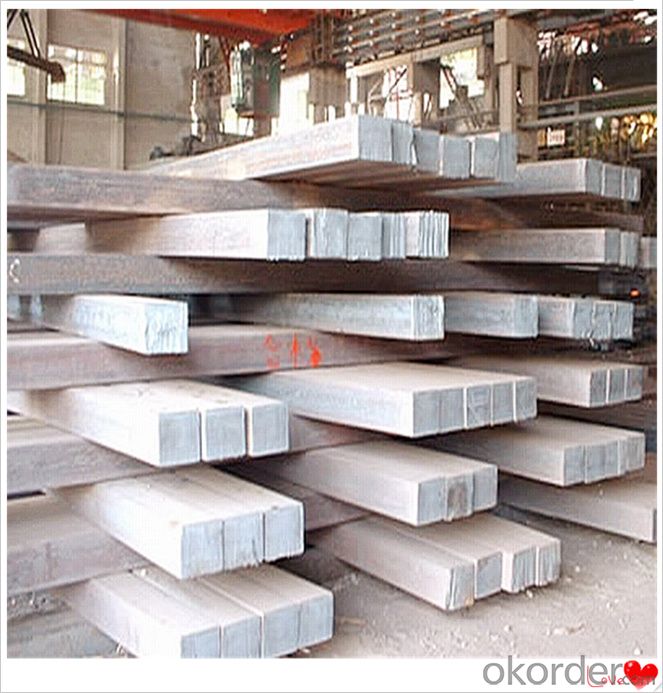
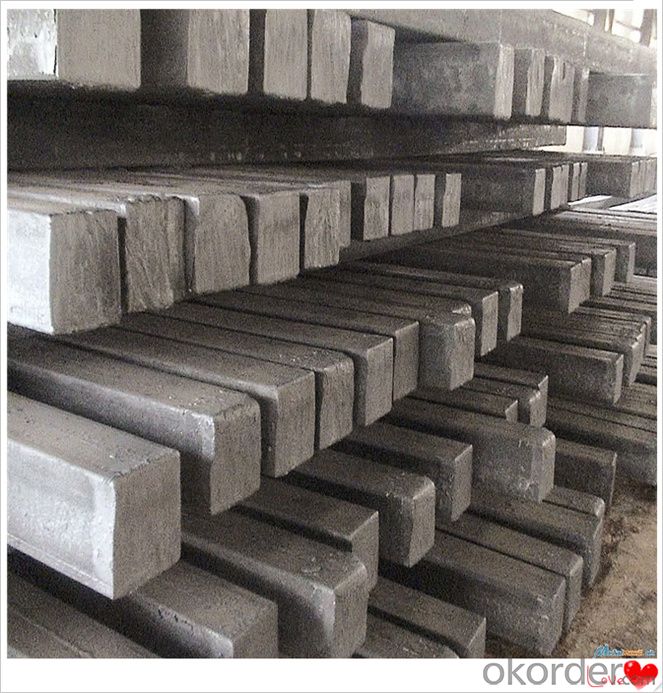
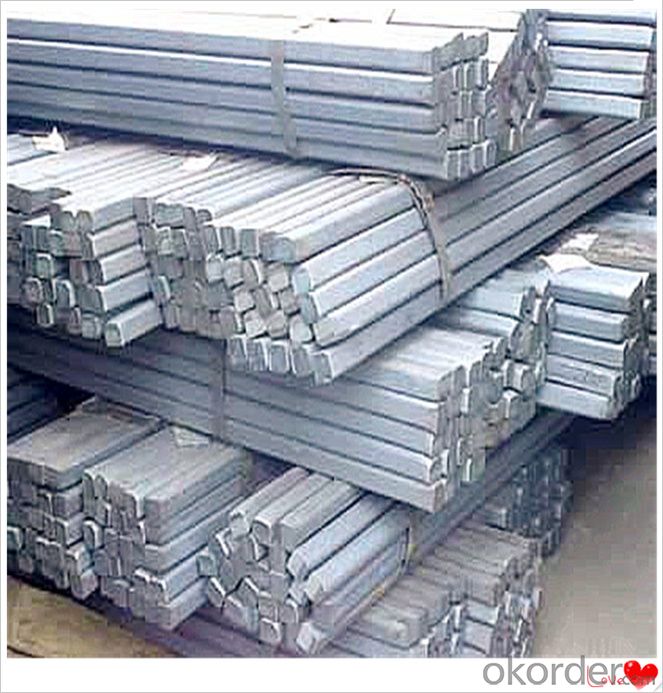
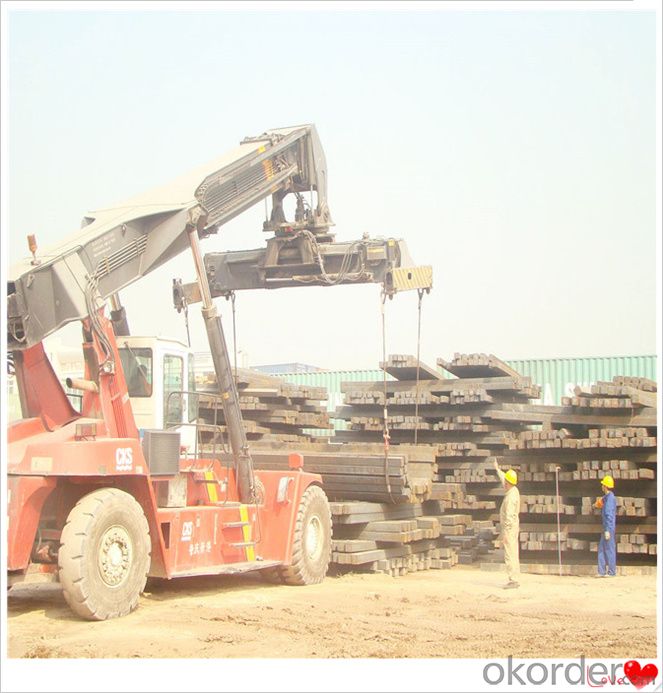
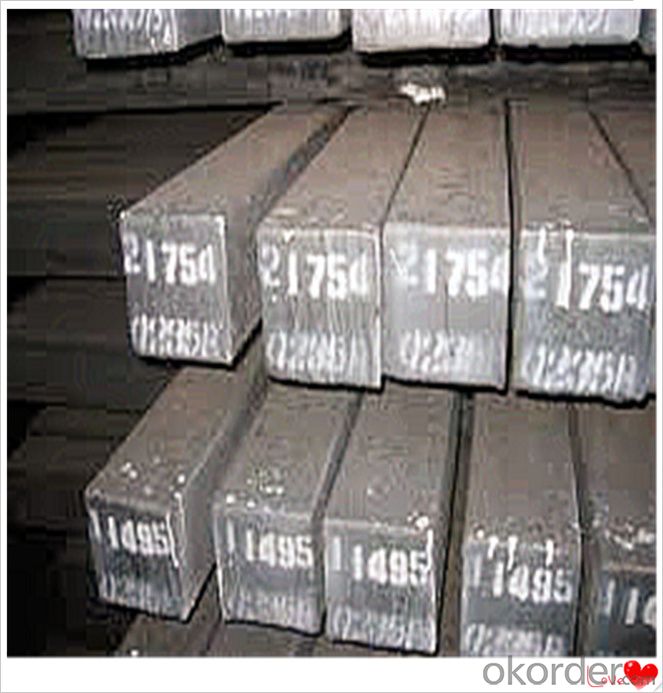
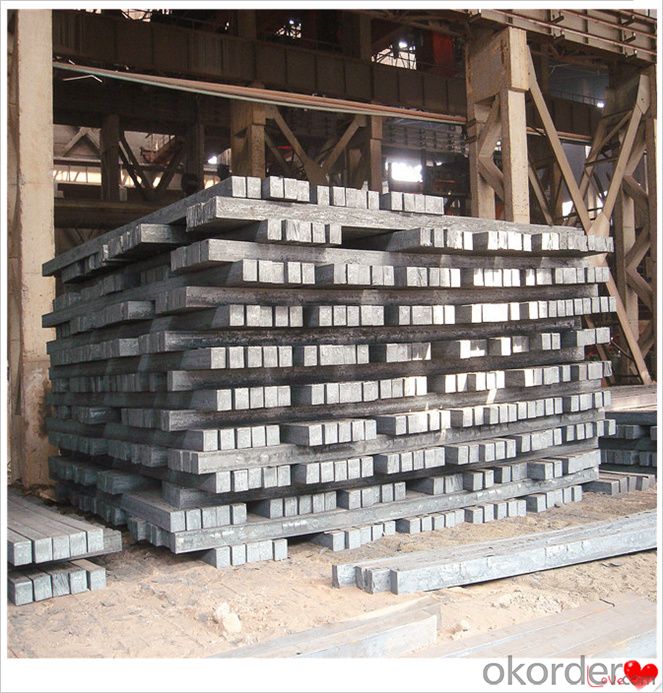
Technical Data
Size:100*100,120*120,150*150,130*130
Mn: 0.3%-0.6%
C: 1%
Cr:0.1%
Packaging
cargo ship or container
usually container price will add 15USD per ton
RFQ
We have organized several common questions for our clients,may help you sincerely:
1) How about your company?
A world class manufacturer & supplier of castings forging in carbon steel and alloy steel,is one of the large-scale professional investment casting production bases in China,consisting of both casting foundry forging and machining factory. Annually more than 8000 tons Precision casting and forging parts are exported to markets in Europe,America and Japan. OEM casting and forging service available according to customer’s requirements.
2) How to guarantee the quality of the products?
We have established the international advanced quality management system,every link from raw material to final product we have strict quality test;We resolutely put an end to unqualified products flowing into the market. At the same time, we will provide necessary follow-up service assurance.
3) How long can we receive the product after purchase?
In the purchase of product within three working days, We will arrange the factory delivery as soon as possible. The pecific time of receiving is related to the state and position of customers.Commonly 7 to 10 working days can be served.
4)Do you have your own QC department?
Yes, we have, our QC department will inspect the goods during the process of mass production and after completion of production.
hot sale!!! steel billets/ mild steel bar/ billet steel
(1): High quality steel with reasonable price.
(2): Wide excellent experiences with after-sale service.
(3): Every process will be checked by responsible QC which insures every product's quality.
(4): Professional packing teams which keep every packing safely.
(5): Trial order can be done in one week.
(6): Samples can be provided as your requirements.
If you are interested in our products, please don't hesitate to contact me.
Your any inquiry will be appreciated and we will offer you a rock-bottom price.
- Q:What are the different types of steel billet shearing techniques?
- There are several types of steel billet shearing techniques, including guillotine shearing, rotary shearing, and flying shear.
- Q:What is the role of steel billets in the production of automotive components?
- Steel billets play a crucial role in the production of automotive components. These billets are semi-finished metal products that serve as the raw material for various parts used in the automotive industry. Firstly, steel billets are used to manufacture engine components such as crankshafts, camshafts, and connecting rods. These are vital parts that contribute to the smooth functioning of the engine. The strong and durable properties of steel make it an ideal material for these components, ensuring they can withstand the high temperatures and pressures within the engine. Secondly, steel billets are used to produce chassis and suspension components. These include parts like control arms, steering knuckles, and axle shafts, which are responsible for the vehicle's stability, maneuverability, and overall performance. Steel's high strength-to-weight ratio and excellent fatigue resistance make it suitable for these safety-critical components. Furthermore, steel billets are utilized in the production of transmission and drivetrain components. These include gears, shafts, and clutch plates, which are essential for transmitting power from the engine to the wheels. Steel's toughness, wear resistance, and ability to handle high torque loads make it an ideal material for these parts, ensuring their durability and reliability. Additionally, steel billets are used in the manufacture of body and interior components. These can include door hinges, brackets, seat frames, and various structural parts. Steel's versatility, formability, and corrosion resistance make it an excellent choice for these components, providing strength and protection to the vehicle's occupants. Overall, steel billets form the foundation for the production of a wide range of automotive components. They provide the necessary strength, durability, and reliability required for critical parts in engines, chassis, transmission systems, and body structures. Without steel billets, the automotive industry would struggle to produce high-quality and safe vehicles.
- Q:What are the challenges faced in the distribution and supply chain of steel billets?
- There are several challenges faced in the distribution and supply chain of steel billets. Firstly, one major challenge is the transportation of steel billets. Steel billets are heavy and bulky, requiring specialized equipment and infrastructure for their transportation. This can lead to higher logistics costs and difficulties in finding suitable transport options, especially for international shipments. Secondly, the storage and inventory management of steel billets can be challenging. Steel billets require proper storage facilities to prevent corrosion and damage. Additionally, managing inventory levels and ensuring timely deliveries can be complex, as steel billets are often sourced from multiple suppliers and delivered to various locations. Thirdly, quality control is a significant challenge in the distribution and supply chain of steel billets. Ensuring consistent quality throughout the supply chain requires strict adherence to quality standards and effective quality control measures. This includes regular inspections, testing, and certification processes to guarantee the integrity and suitability of the steel billets. Another challenge is the fluctuating demand and market conditions. The steel industry is highly cyclical, with demand and prices subject to economic fluctuations and global market trends. This poses challenges in terms of forecasting demand, managing production capacity, and optimizing inventory levels to meet customer requirements while minimizing costs. Furthermore, global trade regulations and customs procedures can create challenges in the distribution and supply chain of steel billets. Compliance with various import and export regulations, including trade restrictions and tariffs, can impact the flow of steel billets across different countries, leading to delays and additional costs. Lastly, ensuring sustainable and responsible sourcing practices is becoming increasingly important in the steel industry. Meeting environmental and social standards, such as responsible sourcing of raw materials and reducing carbon emissions, can be challenging for steel billet manufacturers and distributors. This requires implementing sustainable practices throughout the supply chain, which may involve additional costs and complexities. In conclusion, the distribution and supply chain of steel billets face challenges related to transportation, storage, quality control, demand fluctuations, trade regulations, and sustainable sourcing. Overcoming these challenges requires effective planning, strong partnerships, and the implementation of efficient processes to ensure a smooth and reliable supply of steel billets to customers.
- Q:What are the different surface treatments for improved dimensional accuracy in steel billets?
- There are several surface treatments that can be employed to enhance dimensional accuracy in steel billets. These treatments aim to reduce surface imperfections, improve surface finish, and minimize dimensional variations. Some common surface treatments for improved dimensional accuracy in steel billets include: 1. Shot blasting: This process involves propelling abrasive particles at high velocity onto the surface of the billet. Shot blasting removes any dirt, scale, or surface contaminants, resulting in a smoother and cleaner surface. This treatment helps to eliminate any potential dimensional variations caused by surface irregularities. 2. Peeling: Peeling is a machining process in which a thin layer of material is removed from the surface of the billet using a cutting tool. This treatment helps to eliminate surface defects and imperfections, resulting in improved dimensional accuracy. Peeling can also enhance the surface finish of the billet. 3. Grinding: Grinding is a process in which an abrasive wheel or belt is used to remove material from the surface of the billet. This treatment helps to remove any surface irregularities, such as high spots or scratches, resulting in improved dimensional accuracy. Grinding can also provide a smoother and more uniform surface finish. 4. Turning: Turning is a machining process in which a cutting tool is used to remove material from the surface of the billet. This treatment helps to achieve precise dimensions and surface finish. Turning can also be used to improve concentricity and straightness of the billet. 5. Polishing: Polishing involves using abrasive materials or compounds to create a smooth and reflective surface on the billet. This treatment helps to remove any surface imperfections, such as scratches or blemishes, resulting in improved dimensional accuracy and surface finish. It is important to note that the choice of surface treatment may vary depending on the specific requirements and desired outcomes. Manufacturers often employ a combination of these treatments to achieve optimal dimensional accuracy in steel billets.
- Q:What is the maximum length of a steel billet?
- The length of a steel billet can differ based on multiple factors like the manufacturing process, equipment capabilities, and specific industry demands. Typically, steel billets can vary in length from a few inches to several meters. Nevertheless, it is crucial to acknowledge that longer billets pose more difficulties in their production and handling due to their heavier weight and potential for distortion. Hence, determining the maximum length of a steel billet is usually based on practical considerations and operational constraints within the steel industry.
- Q:How does the market demand for steel billets fluctuate over time?
- The demand for steel billets in the market can change due to a variety of factors. One of the main drivers of demand is the overall state of the economy. When the economy is doing well, there is usually a higher demand for steel billets because they are an important raw material for industries like construction, automotive, and manufacturing. On the other hand, during economic downturns or recessions, the demand for steel billets tends to decrease as these industries reduce their production and investment. Another factor that can affect the market demand for steel billets is the construction industry. Projects related to infrastructure, real estate, and urbanization can increase the demand for steel billets, as they are necessary for building structures like buildings and bridges. Changes in government policies or regulations regarding infrastructure spending can also have an impact on the demand for steel billets. Furthermore, the automotive industry plays a significant role in the demand for steel billets. As the automotive sector grows or declines, the demand for steel billets used in the production of automobile parts and components can change accordingly. Global trade and international relations can also influence the market demand for steel billets. Factors like tariffs, trade agreements, and geopolitical tensions can affect the supply and demand dynamics, leading to fluctuations in demand. For example, increased protectionism or trade barriers can result in reduced demand for steel billets in certain markets. Lastly, technological advancements and changes in consumer preferences can have an impact on the demand for steel billets. For instance, the increased use of alternative materials like aluminum or composites in certain industries may decrease the demand for steel billets. Additionally, shifts in consumer preferences towards more sustainable or lightweight products can also affect the demand for steel billets. In conclusion, the demand for steel billets in the market can change due to factors such as economic conditions, construction industry activity, automotive industry trends, global trade dynamics, and technological advancements. It is important for market participants to understand these factors and their potential impacts in order to anticipate and adapt to changes in demand for steel billets.
- Q:What is the role of steel billets in the manufacturing of cutting tools?
- Steel billets play a crucial role in the manufacturing of cutting tools as they are the starting material for producing high-quality tool steels. These billets are heated, forged, and machined to form the desired shape and size of cutting tools such as drills, saw blades, and milling cutters. The strength and durability of the cutting tools largely depend on the quality and composition of the steel billets used.
- Q:What is the role of steel billets in the manufacturing of automotive suspension systems?
- Steel billets play a crucial role in the manufacturing of automotive suspension systems. Suspension systems are responsible for providing a smooth and comfortable ride while ensuring the vehicle's stability and handling. Steel billets are used as a raw material to fabricate various components of the suspension system, such as control arms, coil springs, sway bars, and stabilizer links. One of the primary requirements of suspension systems is strength and durability. Steel billets, due to their high tensile strength and excellent mechanical properties, are an ideal choice for manufacturing suspension components. These billets are typically made from carbon steel, which offers exceptional strength and can withstand the heavy loads and forces experienced by suspension systems. The process of manufacturing suspension components from steel billets involves several stages. Firstly, the billets are heated to a specific temperature, typically above their recrystallization temperature, to make them more malleable. This allows the material to be easily shaped and formed into the desired component. Once heated, the billets are subjected to various forming processes, such as hot forging, cold forging, or machining, depending on the specific component being manufactured. These processes help shape the billets into control arms, coil springs, or other suspension components with precise dimensions and specifications. The use of steel billets in suspension systems offers several advantages. Firstly, steel is a cost-effective material, making the overall manufacturing process more economical. Additionally, steel provides excellent strength-to-weight ratio, allowing for lighter suspension components without compromising on strength and durability. This, in turn, contributes to improved fuel efficiency and overall vehicle performance. Moreover, steel billets have high resistance to wear, corrosion, and fatigue, ensuring that the suspension components can withstand the harsh operating conditions and last for a long time. They also offer excellent damping characteristics, helping to absorb and dissipate vibrations and shocks, further enhancing the ride comfort and stability of the vehicle. In conclusion, steel billets are essential in the manufacturing of automotive suspension systems. Their strength, durability, and malleability make them an ideal raw material for fabricating various suspension components. By utilizing steel billets, automotive manufacturers can produce suspension systems that provide a smooth ride, stability, and enhanced performance, contributing to overall driver and passenger comfort and safety.
- Q:Can steel billets be used for artistic purposes?
- Yes, steel billets can be used for artistic purposes. Steel is a versatile material that can be shaped, welded, and manipulated to create various artistic sculptures, structures, and decorative pieces. It offers strength, durability, and a modern aesthetic, making it a popular choice among artists and designers. Additionally, steel can be painted, polished, or oxidized to create different visual effects, allowing artists to experiment and showcase their creativity.
- Q:What are the different types of surface defect detection equipment for steel billets?
- Steel billets have a variety of surface defect detection equipment available. These equipment are specifically designed to identify and analyze defects on the surface of steel billets, ensuring that only top-notch products are used for different applications. Some of the diverse types of surface defect detection equipment for steel billets include: 1. Ultrasonic Testing (UT): UT equipment utilizes sound waves to detect surface defects in steel billets. It emits high-frequency sound waves that penetrate the material and bounce back when they come across any surface irregularities. This method aids in the identification of cracks, voids, and other defects on the surface. 2. Eddy Current Testing (ECT): ECT equipment uses electromagnetic induction to detect surface defects in steel billets. It operates by passing an alternating current through a coil, generating a magnetic field that interacts with the conductive material of the billet. Any surface defect or irregularity causes a change in the magnetic field, which can be measured and analyzed. 3. Magnetic Particle Inspection (MPI): MPI equipment utilizes magnetic fields and iron particles to detect surface defects in steel billets. The billet is magnetized, and iron particles are applied to its surface. These particles gather around any surface defect, creating visible indications that can be easily identified and evaluated. 4. Visual Inspection: Visual inspection equipment involves the use of cameras, lasers, and other optical devices to detect surface defects in steel billets. These devices capture images or videos of the billet's surface, enabling inspectors to visually identify any irregularities or defects. 5. Thermographic Testing: Thermographic equipment uses infrared cameras to detect surface defects in steel billets by measuring temperature variations. Any defect causes a difference in heat transfer, resulting in distinct thermal patterns that can be detected and analyzed. 6. X-ray Inspection: X-ray inspection equipment employs X-ray radiation to penetrate the steel billet and detect internal and surface defects. It provides detailed images that allow inspectors to identify cracks, voids, and other defects that are not visible to the naked eye. In summary, these various types of surface defect detection equipment for steel billets offer a range of methods to ensure the quality and integrity of the billets, enabling manufacturers to deliver high-quality steel products to different industries.
1. Manufacturer Overview |
|
|---|---|
| Location | |
| Year Established | |
| Annual Output Value | |
| Main Markets | |
| Company Certifications | |
2. Manufacturer Certificates |
|
|---|---|
| a) Certification Name | |
| Range | |
| Reference | |
| Validity Period | |
3. Manufacturer Capability |
|
|---|---|
| a)Trade Capacity | |
| Nearest Port | |
| Export Percentage | |
| No.of Employees in Trade Department | |
| Language Spoken: | |
| b)Factory Information | |
| Factory Size: | |
| No. of Production Lines | |
| Contract Manufacturing | |
| Product Price Range | |
Send your message to us
Continuous Casting Steel Billet 3SP 5SP 20MnSi Multifunctional
- Loading Port:
- Dalian
- Payment Terms:
- TT OR LC
- Min Order Qty:
- 100 m.t.
- Supply Capability:
- 50000 m.t./month
OKorder Service Pledge
OKorder Financial Service
Similar products
New products
Hot products
Related keywords
